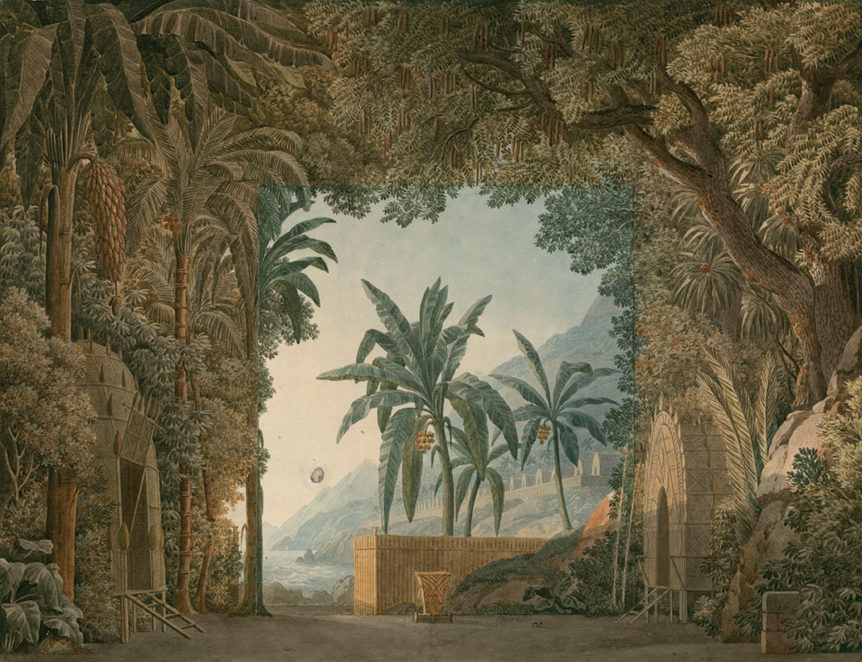The name of Charles Percier has for so long been linked with that of his collaborator and partner, Pierre François Fontaine, most notably for their Recueil de décorations intérieures, that the breadth of his individual accomplishments and talents as revealed in the current exhibition at the Bard Graduate Center is a bit mindboggling. Despite its somewhat limited gallery space, Bard manages to present the exhibition, which covers an enormous amount of material, much of it relatively monochromatic, while keeping the visitor marveling all the way through at the virtuosity of this architect, urban planner, graphic designer, and designer of gardens, furniture, interiors, stage sets, and more. There are some wonderfully atmospheric watercolors and many (though a mere fraction of what he produced) of Percier’s more formal, exquisitely drawn renderings of ancient monuments, other buildings, and architectural details (he traipsed some twenty-three hundred miles in Italy and France making them), and of his own architectural, furniture, and interior designs.

Set design for “Elisca, or Maternal Love,” Act I by Charles Percier, Pierre Fontaine, and Jean Thomas Thibault. 1799. Bibliothèque-musée de l’opéra, Bibliothèque nationale de France, Paris.
His vision is rendered real in furniture, ceramics, and silver made to his designs, as well as in photographs of the surviving rue de Rivoli facades that were part of the plan for joining the Louvre and Tuileries palaces, not to mention the many surviving buildings and monuments in Paris today, such as the Arc de Triomphe du Carrousel.

Clock designed by Charles Percier, made by the Sèvres Porcelain Manufactory, 1813. Cité de la céramique, Sèvres, MNC.

Design for a bedroom for Josephine by Percier. c. 1802. Ink, wash, and watercolor on paper. Private collection.
Beyond the panoply of his own designs for the real and the imagined, however, Percier’s significance as a teacher was “profound,” says the show’s lead curator, Jean-Philippe Garric, and this is an important aspect of the exhibition. “One cannot imagine Charles Garnier’s Opéra house or the Gare d’Orsay without his influence.” Working in the turbulent years from the height of the French monarchy through the Revolution to the rise and fall of the Empire, Percier was a remarkably flexible designer who well deserves this solo show—and the handsome catalogue with contributions by a host of scholars that accompanies it. After closing in New York, it will travel to the château de Fontainebleau, fitting indeed, since it, above all other buildings, seems to have held a special place in Percier’s heart, as witnessed by the hundreds of drawings he made of it.
Charles Percier: Architecture and Design in an Age of Revolutions • Bard Graduate Center Gallery, New York • to February 5 • bgc.bard.edu

